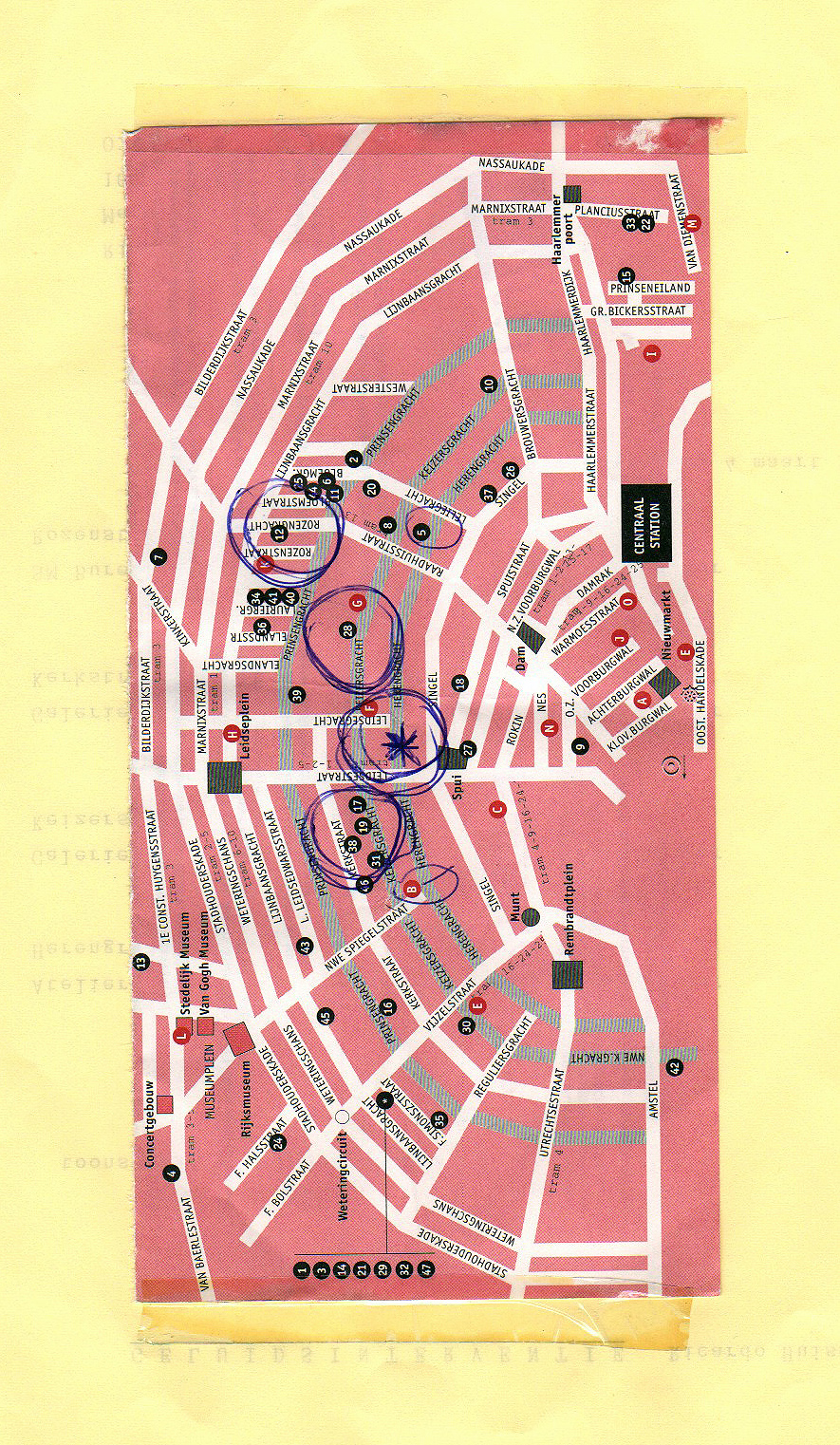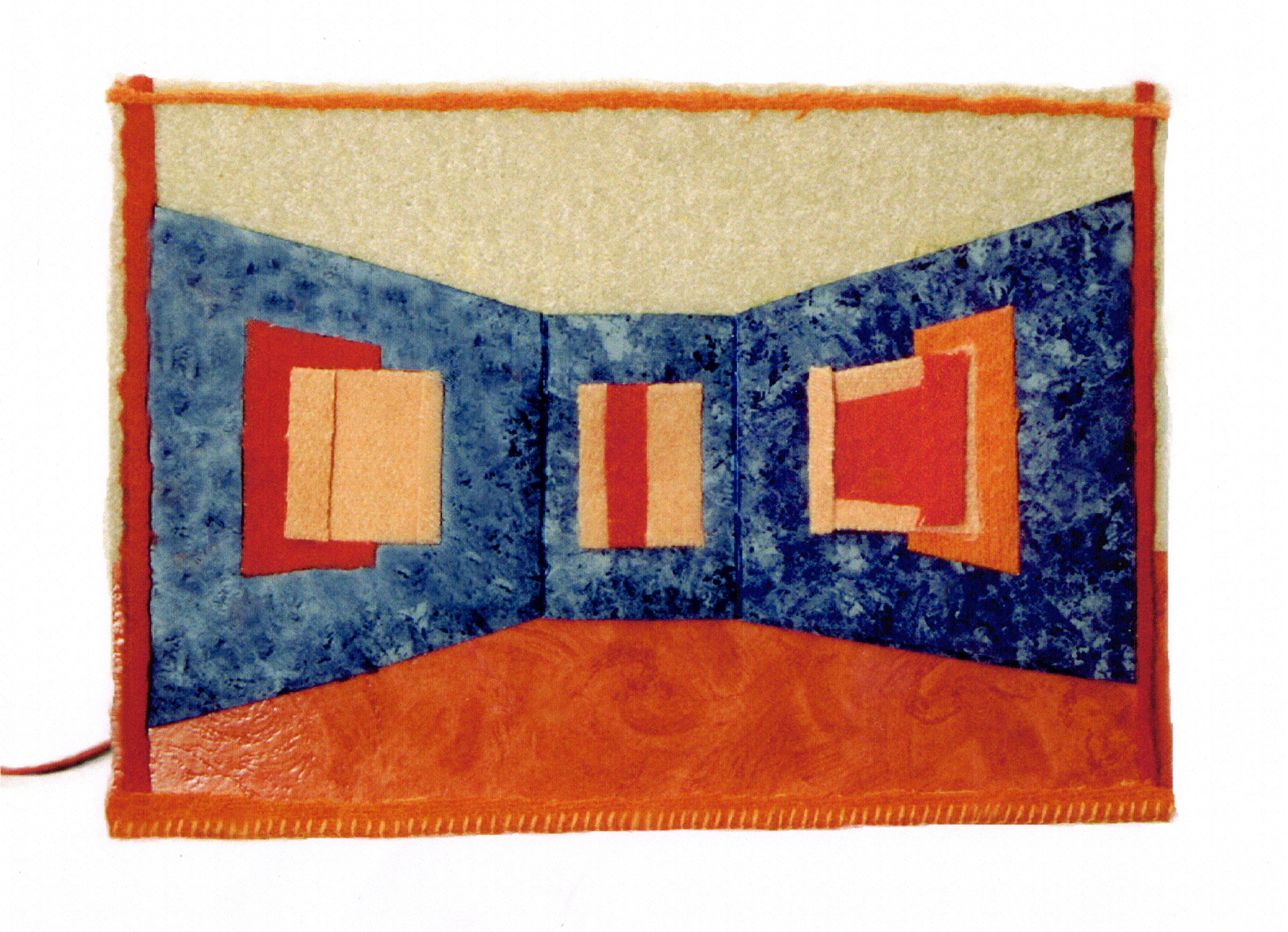“mooie ten-toon-stellingen” – project
Since 2000 I am collecting binaural recordings of my soundwalks through exhibition spaces in different cities of Europe as part of the project: “mooie ten-toon-stellingen” (“beautiful sounding exhibitions). The Dutch word for exhibitions: tentoonstellingen contains the words “toon” (tone) and “stellingen” (statements). Generally the recording starts outside when entering the museum, gallery, exhibition space and stops a the end of a specific exhibition or when leaving the building of the art institute.
This is an ongoing project researching the personal listening experience as public visitor, sound artist and soundscape composer. Capturing binaural soundscapes, archiving the curated and uncurated sounds of an exhibition and its surroundings at a specific moment; rehearing, reinterpreting, re-listening and sometimes recomposing and live performing.
The project is questioning the effects of sounds and soundscapes in the museum or art institute on the experience of the public when visiting the museum and walking through the exhibition spaces, creating their own soundwalk with personal “multi sensorial hearing perspective” (link) as visitor, as listener and as sound performers them self.
It started in 2000 with a sonic intervention titled: “toonstelling van de tentoonstellingsruimte”, “tone-statement of the exhibition space” in gallery Atelier 408 in Amsterdam during an exhibition with paintings and sculptural work of a friend. The sonic intervention with sounds from art galleries in the neighbourhood was creating a new contextual, geographical relation with work exhibited and was triggering discussions about the functions of sounds at and sounds of an exhibition space. I also presented tone-statements on paper (link)

After this I had a solo exhibition with the title: “mooie ten-toon-stellingen”, “beautiful sounding exhibitions”. This title was inspired by the: “mooie tentoonstellingen”, “beautiful exhibitions” – paintings of the Dutch painter René Daniëls in the eighties of the last century. (link René Daniëls) His paintings of exhibition spaces, painted with transparent egg tempera, are in a way opening an imaginary exhibition space to discover new spaces, ideas and symbols, reflecting his personal statements about the art world and curators in that time. I was presenting a tactile version of his painting: “painting on the bullfight” (link) made of ordinary tactile household materials including woollen blanket and titled it “curating the wool fight”.

The work had a speaker on the backside producing sounds of exhibition spaces and soundwalks through museums and galleries. It symbolized the imaginary transparency of the sound spaces with continuing changing soundscapes and opening new multi sensorial hearing perspectives. The public was invited to listen and touch the work, feeling the soundscapes subtel resonating through the different tactile materials with different temperatures, softness, roughness, smoothness, dept, rhythms, etc.
The primal goal of the research is to create more awareness of the sounds we hear and produce when entering and being in the exhibition spaces: the complex beauty of sound- and sense envelopes, the mixed textures, tactility, rhythms, tones, silences, (sound) contexts, (sound) reflections when walking through the museum, gallery or art institute. As visitor, listener and sound performer almost unaware we become inherent composers of our own multi sensory experience. By following our own path and rhythm together with other visitors we are creating, composing our personal soundscape as a soundwalk through the museum.
Sounds and soundscapes besides images, painting, sculptures, etc. belong to the museum. The sounding objects, installations, kinetic art, the sounds as objects it self or as sound matter become part of the texture of the spaces and architecture, reflected by art work, the walls, sealing, visitors, partly absorbed by the clothes of the public, curtains, etc. The visitor is adding sound matter and meaning to the personal and collective experience of being in the museum. The experience of (sound) art in museum “speaks for it self”: the vibrations and reflections become part of the listener in that specific moment; moving through the air, touching the ears, skin, body and perhaps the soul of the visitor. The visitors are collecting multi sensory impressions by being in the museum, reading descriptions, looking at the art, taking pictures, listening to the sounds of art, the art guide, the audio walk through headphones, moving around, changing their gestures, challenging their hearing perspectives …. , buying cards, a book or catalogue of the exhibition or their favorite artists in the museum shop to remember the experience in the museum, to rethink, to study, etc. The museum shop as a possibility to get “in touch” with the art context.
The sounds of the moving public through the exhibitions are tuned and “curated” by the unspoken and restricted rules belonging to the museum or institute: “don’t touch the art, keep a save distant, stop here to watch, don’t shout, cry or speak to loud, don’t act as a performer your self, don’t move to fast”, etc. Often this reinforces the idea of the museum as a silent and contemplative place for experiencing art. In contradiction the museum and other art institutes, like galleries, artist initiatives, etc. can be noisy, lively, with multi layered soundscapes in passages of one exhibition to another, sudden transparent silences in hidden spaces in corners, musical designed spaces. There can be area’s with great and or massive reverberation just beside a restaurant, the museum shop, the entrances with sounds coming from outside, sounds of pay-desks, staircases, workshop spaces, guided tours, etc. And on specific moments during openings, performances, etc. All these continue changing soundscapes are part of being in the museum.
The museum or art institute as public space with unique sounding character, often designed transparent white cube architecture, with curated strategies to regulate the numbers of visitors, the rhythms of their movements, specific (educational) groups, specific presentations, specific art forms and collections, with its own contexts, rules for experiencing the exhibitions, rebuilding exhibition area’s and mission in a specific place, location, city.
The mission to be an inclusive art institute to inspire all kinds of visitors including the different sense (dis)abled, vulnerable elderly and others reinforces the need to contemplate the museum experience from a multi sensory (hearing) perspective; researching the possibilities of all the senses, the “higher” as well as the “lower” senses in proved or innovative combinations. It offers the possibility to enhance the museum experience and making it more valuable for all kinds of visitors, as we come together in connection with sounds, senses when interchanging our cultural identities.
We can start to revalue the sounds, soundscapes of the exhibition (spaces) as an essential part of the museum ambiance, the impression and experience of being in the museum or gallery as semi public space. By documenting the sounds and soundscapes in the museum properly, giving the possibility to relisten, rethink, rehear, reexperience and research the changes in time and or in different cultures. The sounds of exhibitions in the museum or art institute are changing every moment and through the years. They become resonating and resounding contemporary parts of the art climate, the curators and directors strategy, the expectations of the public, commercial needs, rules for the public, the technical developments of sounding and recording media, art history, cultural, inclusive and political changes and more. They are part of our cultural sonic heritage.
2014 live performance 24 H Amsterdam, mooie ten-toon-stelingen: here
(example soundscapes with sounds from the “beautiful sounding exhibitions” – archive)
2016 “sonic elevation 1” inspired by work “into the air” of Marinus Boezem here
2023 Some “beautiful sounding exhibitions” of exhibtions of the Artmuseum, Kunstmuseum Den Haag are included in their archives
